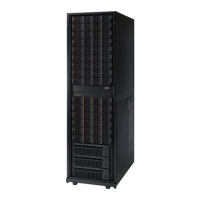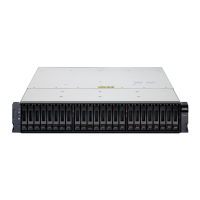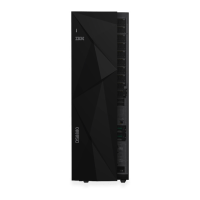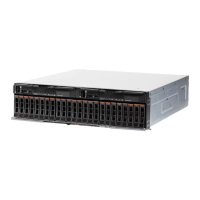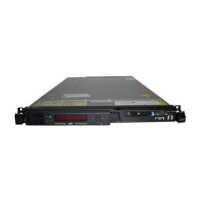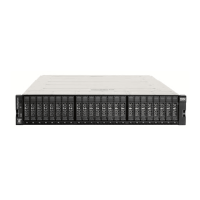Pressure drop versus flow rate for heat exchangers (including
quick-connect couplings) is defined as approximately 48 kPa (7 psi) at 30
liters (8 gallons) per minute.
Water volume limits
The heat exchangers hold 2.8 - 5.3 liters (0.75 - 1.4 gallons). 15 meters (50
ft) of 19 mm (0.75-in.) supply and return hoses hold approximately 9.4
liters (2.5 gallons). To minimize exposure to flooding in the event of leaks,
the entire cooling system (heat exchanger, supply hose, and return hose)
excluding any reservoir tank must have a maximum 15.1 liters (4 gallons)
of water. This is a cautionary statement not a functional requirement. Also,
consider using leak detection methods on the secondary loop that supplies
water to the heat exchanger.
Air exposure
The secondary cooling loop is a closed loop, with no continuous exposure
to room air. After you fill the loop, remove all air from the loop. Air bleed
valves are provided at the top of each heat exchanger manifold for purging
all air from the system.
Water delivery specifications for secondary loops
The delivery system for the secondary cooling loop provides chilled water to the
rear-door heat exchanger. The delivery system includes pipes, hoses, and the
required connection hardware to connect to the heat exchanger. This information
provides examples for setting up the secondary cooling loop and operating
characteristics that are needed to provide an adequate, safe supply of water to the
heat exchanger.
The primary cooling loop is considered to be the building chilled-water supply or a
modular chiller unit. The primary cooling loop must not be used as a direct source
of coolant for the heat exchanger for the following reasons:
v If the supply water temperature is below the room dew point, condensation
forms and causes dripping from the door components.
v If a leak develops in the door, supply hose, or return hose, a large amount of
water is available.
Procurement and installation of the components that are needed to create the
secondary cooling loop system are required for this design and are your
responsibility. See “Secondary cooling loop parts and services information” on
page 88 for information about suppliers of hoses and cooling distribution units.
76 IBM XIV Gen3 281x-11x, 281x-21x, and 281x-314 Planning Guide

